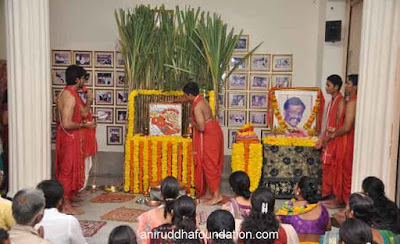Ashwattha is none other than the Peepal (Sacred Fig) Tree. This tree holds extraordinary importance in the Indian scriptures. ‘Roots in the upward (top) direction and branches in the downward (bottom) direction’ is how the Ashwattha tree, symbolising worldly life is described. The Ashwattha tree is thus, believed to represent the relationship between the ‘Paramatma’ and the world (where the roots denote the direction of the Paramatma, while the whole world is laid out under its protection). Bhagwan Shree Krishna, while describing himself in the Bhagwat Geeta
Significance

Shree Hanumant is the embodiment of the exquisite union of the forms of Paramatma’s Mahapran on one hand, and that of being the supreme-most devotee of Lord Ramchandra on the other, all at the same time. The ‘Ashwattha Maruti Poojan’ is known as an auspicious poojan of Shree Hanumant and the benefits derived from such a festival are significant and initiate fundamental changes in one’s life. This pooja enables the flow of energy and intellect, to mend the mistakes made in one’s life from its source – Hanumant.
Panchamukha Hanumanta Kavach - Text and Video
 |
| Shree Panchamukha Hanumanta Kavacham artwork by Aniruddha Kaladalan |
Subscribe to:
Comments (Atom)


